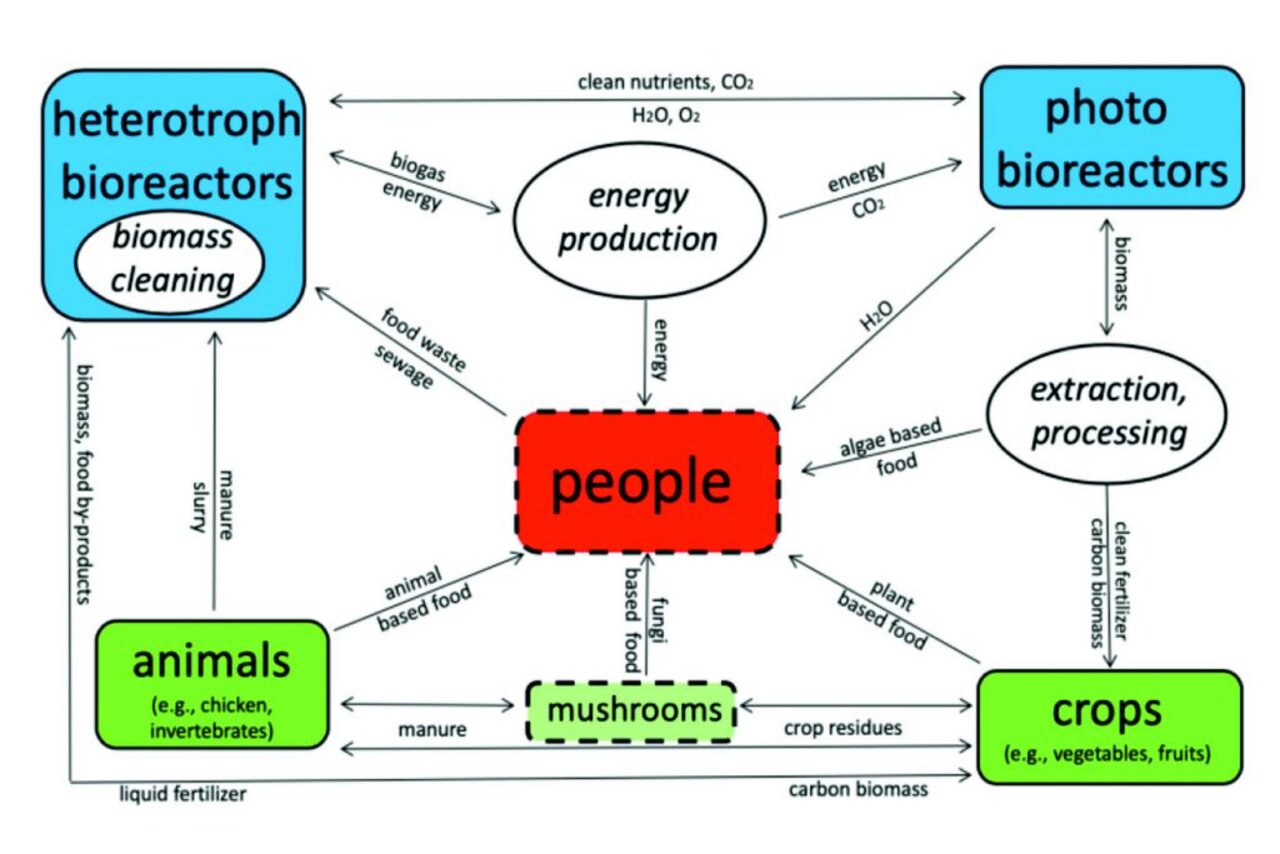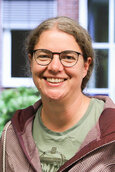Project
LandLessFood-blue

LandLessFood-blue
For a world without hunger and the protection of our environment, new concepts for the global food system are necessary. In the project "LandLessFood-blue", among other things, the potential of bioreactors as components of a sustainable agricultural system will be investigated.
Background and Objective
To feed the global population in 2100, fundamental changes in global agriculture and the entire food value chain are necessary. In Africa in particular, problems are apparently very difficult to solve. Until the end of the century around 80% of the global population growth is expected in this continent - an increase from 1.2 to 4.4 billion people.
Also the climate change and the depletion of finite resources which are required to intensify agriculture (for example phosphate and fossil fuels) pose major challenges to the agricultural system and endanger food security.
Therefore the aim of the „LandLessFood“ project is to develop new concepts for food and feed production where nutrients can be extracted from waste streams and thus recycled. In the subproject “LandLessFood-blue” we investigate the potential of bioreactors as components of a sustainable, circular agricultural system. The focus here is not only on bioreactors for heterotrophic microorganisms, but also on photobioreactors for autotrophic microorganisms.
Approach
The “LandLessFood-blue” project is part of the projekt "LandLessFood - Concept for a sustainable global food system in 2100”. We work on it together with the Thünen Institute for Organic Agriculture.
While our colleagues in Trenthorst are working on the production of mushrooms and earthworms as part of a circular, sustainable food system in the subproject "LandLessFood-green", we are examining the suitability of algae and fungi cultivated submers for this application in the subproject "LandLessFood-blue" at the Thünen Institute of Agricultural Technology.
Initially, we review the current state of knowledge by means of literature research a) about the potential of microalgae for food, feed and fertilizer production and b) about the possibilities of using wastewater and industrial waste gases as a carbon source for the cultivation of algae. Our main focus is on the production of starch by microalgae. Since only a small fraction of the microalgae and cyanobacteria species have been scientifically studied so far, we screen and examine microalgae from different strain collections and in parallel from environmental samples. Very suitable strains are then cultivated in a photobioreactor and optimized for various parameters such as media composition, temperature, light intensity and duration, pH value, gas supply, etc. After successful optimization, we can change algae cultivation to the use of waste streams such as wastewater and industrial exhaust gases. In addition, we are investigating fungi to see whether they can use the microalgae or their valuable components as a substrate. The fungi are also cultivated and optimized in bioreactors. Based on this work, we want to develop a cultivation process for feed and food production in bioreactors using waste streams instead of pure substrates.
Data and Methods
In order to exemplify the whole project, we build a true-to-nature, reduced-scale model, which demonstrates the involvement of the subproject “LandLessFood-blue” into the main project and the principle of the sustainable, circular agricultural system of the LandLessFood idea. In this context the circular agricultural system shall exemplarily represent the nutrition of one person.
Thünen-Contact

Involved Thünen-Partners
Duration
3.2020 - 12.2025
More Information
Project status:
ongoing
Publications on the project
- 0
Tölle M, Kuenz A (2025) Optimizing separation: Utilizing Aspergillus oryzae for bioflocculation of marine Tetraselmis subcordiformis on agricultural residues. J Appl Phycol 37(1):233-245, DOI:10.1007/s10811-024-03400-0
- 1
Rahmann G, Grimm D (2021) Food from 458 m2-calculation for a sustainable, circular, and local land-based and landless food production system. Organic Agric 11:187-198, DOI:10.1007/s13165-020-00288-1
- 2
Grimm D, Kuenz A, Rahmann G (2021) Integration of mushroom production into circular food chains. Organic Agric 11:309-317, DOI:10.1007/s13165-020-00318-y
- 3
Kuenz A, Grimm D, Rahmann G (2021) Versatility of algae - exploring the potential of algae for nutrient circulation. Organic Agric 11:251-260, DOI:10.1007/s13165-020-00308-0
- 4
Rahmann G (2020) Back in town. Biowelt 16(2):54
- 5
Rahmann G, Grimm D, Kuenz A, Hessel EF (2020) Combining land-based organic and landless food production: a concept for a circular and sustainable food chain for Africa in 2100. Organic Agric 10:9-21, DOI:10.1007/s13165-019-00247-5
- 6
Rahmann G, Olowe VI, Neuhoff D, Shade J, Hammermeister A, Niassy S, Ji L, Erisman JW, Schoeber M, Loes A K, Kuenz A, Ullmann J, Brányiková I, David W, Chander M, Huis A van, Grimm D, Wan Mohtar WAA-QIB, Zanoli R, Khalid A (2019) LandLessFood Workshop : Combining land-based organic and landless food production: concept for a sustainable solution for Africa in 2100 ; November 14-16, 2019 in Marrakesh, Morocco. 4 p






